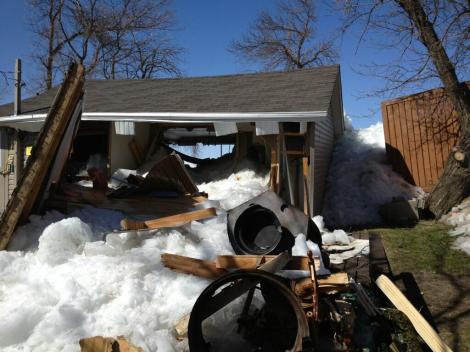Melting glaciers might have been the farthest thing from some lakeshore-dwelling Minnesotans’ and Manitobans’ minds these past few days.
Fast-growing sheets of ice, marching steadily forward as if out of a horror film, destroyed homes near Dauphin Lake in Manitoba, Canada, and caused damage along the southeastern shores of Lake Mille Lacs in Minnesota. They rose from melting lakes and were blown by powerful winds up foreshores into yards and homes.
Amateur video of the advancing ice was captured Saturday by anxious residents in Minnesota and posted to YouTube:
The ice sheet on Lake Mille Lacs reportedly covered 10 miles of shoreline and reached 30 feet in height in some places before its advance was thwarted by a change in the weather.
The combination of strong winds and thawing spring weather triggered the unusual outbreak. “The lake started to break up, so we started to see open spots develop, and then we had strong northwesterly winds that blew that ice onshore,” Dean Melde, a National Weather Service meteorologist in Duluth, Minn., told Grist. “You keep bringing more water and waves and whatnot, and it just keeps pushing and piling and it just keeps moving inland.”
That bad dream paled when compared with the nightmare just north of the North Star State in Canada’s Manitoba province. An emergency was declared in the rural municipality of Ochre Beach after a similar phenomenon destroyed or seriously damaged 27 homes. It’s believed that nobody was injured, though none of the homes were insured against such a freak weather event. “You can’t buy insurance coverage for ice,” Dennis Stykalo, whose home was wrecked, told CBC News. From that news report:
Myles Haverluck was outside barbecuing when he noticed something was wrong. He said he could hear a big roar as he saw the wave of ice coming.
“By the time we went around the front the cabin, next door was moving 10 feet off its foundation,” he told CBC News.
“Then we heard these cracks, and we went inside the house and the ice had come through the windows of the kitchen and living room” Haverluck continued.
Even in an age of melting glaciers, it seems that ice is still capable of packing a serious punch.




